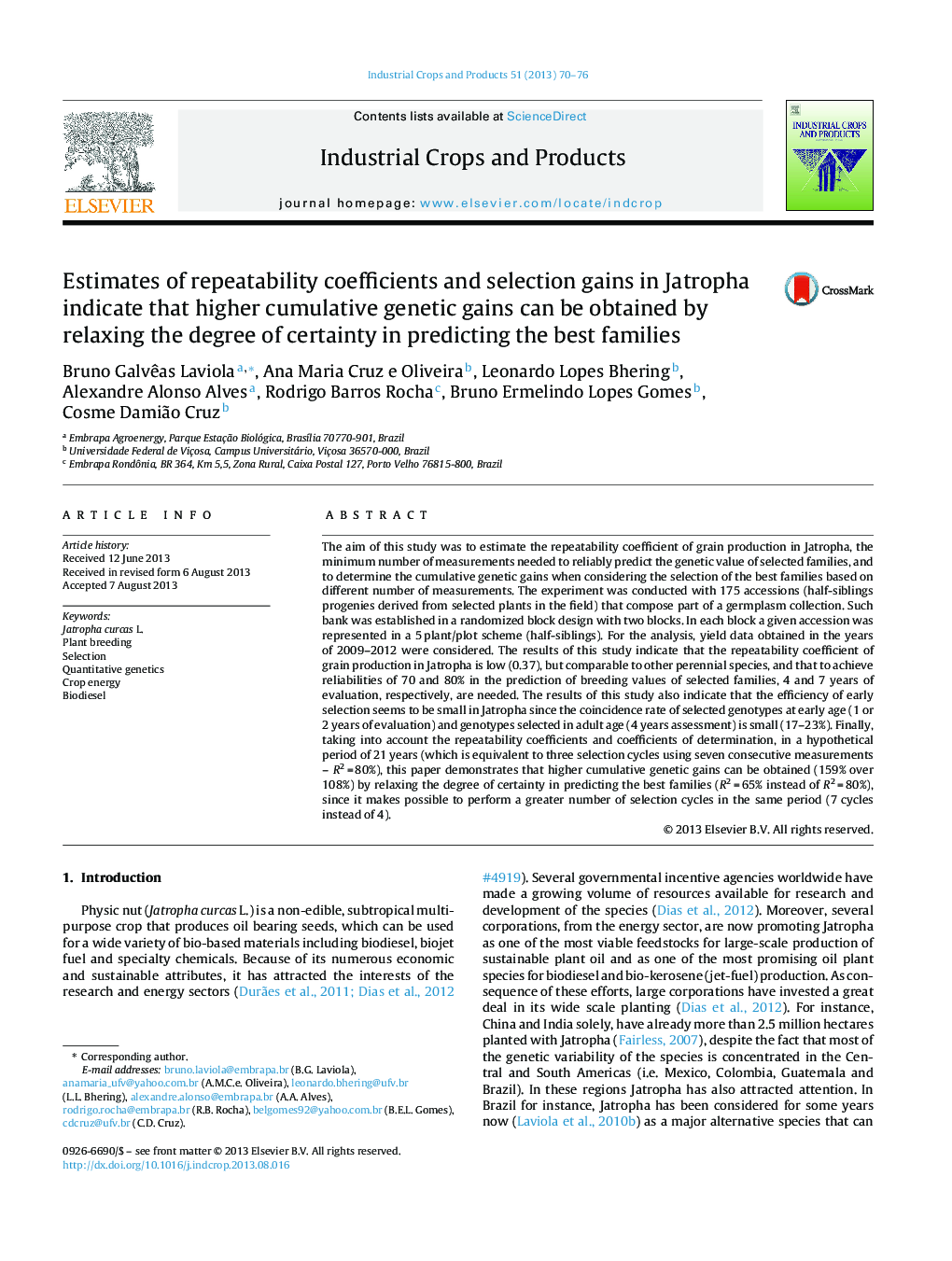| کد مقاله | کد نشریه | سال انتشار | مقاله انگلیسی | نسخه تمام متن |
|---|---|---|---|---|
| 6377260 | 1624858 | 2013 | 7 صفحه PDF | دانلود رایگان |

- The repeatability coefficient of grain production in Jatropha is low, but comparable to other perennial species.
- To achieve reliabilities of 70 and 80% in predicting the genetic value, a minimum of 4 and 7 measurements are required.
- Estimates of coincidence index indicate that the efficiency of early selection is small.
- Higher cumulative genetic gains can be obtained by relaxing the degree of certainty in predicting the best families.
The aim of this study was to estimate the repeatability coefficient of grain production in Jatropha, the minimum number of measurements needed to reliably predict the genetic value of selected families, and to determine the cumulative genetic gains when considering the selection of the best families based on different number of measurements. The experiment was conducted with 175 accessions (half-siblings progenies derived from selected plants in the field) that compose part of a germplasm collection. Such bank was established in a randomized block design with two blocks. In each block a given accession was represented in a 5Â plant/plot scheme (half-siblings). For the analysis, yield data obtained in the years of 2009-2012 were considered. The results of this study indicate that the repeatability coefficient of grain production in Jatropha is low (0.37), but comparable to other perennial species, and that to achieve reliabilities of 70 and 80% in the prediction of breeding values of selected families, 4 and 7 years of evaluation, respectively, are needed. The results of this study also indicate that the efficiency of early selection seems to be small in Jatropha since the coincidence rate of selected genotypes at early age (1 or 2 years of evaluation) and genotypes selected in adult age (4 years assessment) is small (17-23%). Finally, taking into account the repeatability coefficients and coefficients of determination, in a hypothetical period of 21 years (which is equivalent to three selection cycles using seven consecutive measurements - R2Â =Â 80%), this paper demonstrates that higher cumulative genetic gains can be obtained (159% over 108%) by relaxing the degree of certainty in predicting the best families (R2Â =Â 65% instead of R2Â =Â 80%), since it makes possible to perform a greater number of selection cycles in the same period (7 cycles instead of 4).
Journal: Industrial Crops and Products - Volume 51, November 2013, Pages 70-76